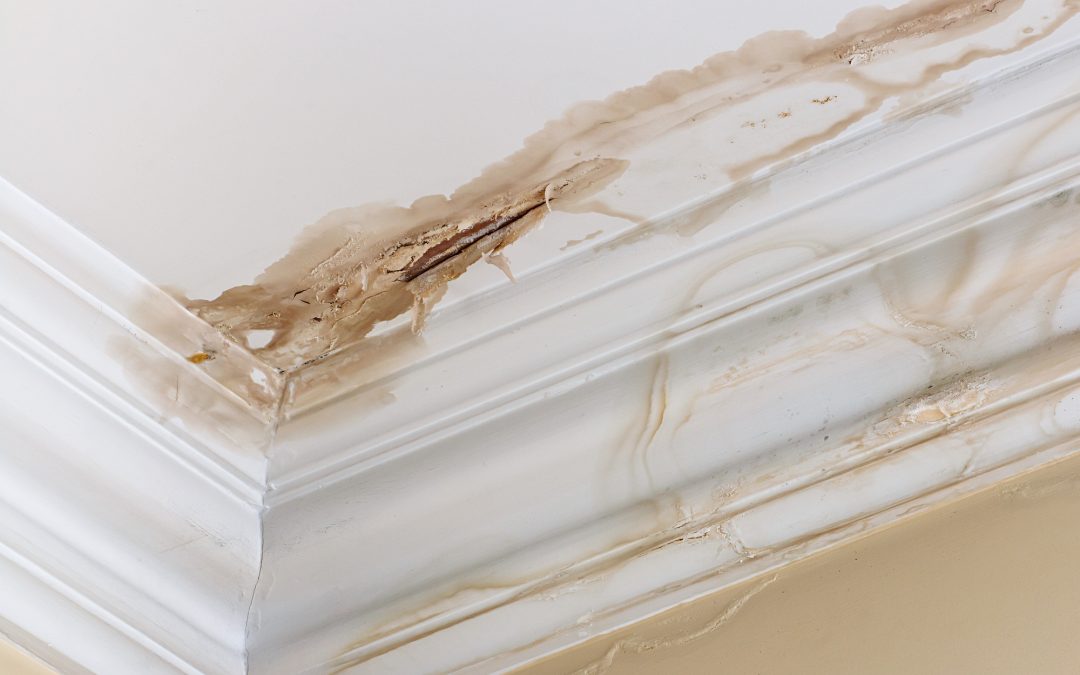Water damage to your home might be more detrimental than you know. Water damage can cause a variety of issues with a house and should be addressed as soon as possible to prevent further damage. Not only will water destroy the structure of your house, but it can also raise health concerns.
Before you have a home inspection done on your house, do a few simple investigations of your own to determine if there’s been water damage or not. Although not all signs of water damage are visible to the bare eye, there are a few telltale signs that you should be on the lookout for.
To inspect your own home for water damage, continue reading below. Here’s our list of a few different ways you can spot water damage in the house!
1. Your Downspouts Are Clogged
Do you know just how essential gutters are to your home? Gutters are working around the clock to ensure all rain and snow water is directed off of your roof and away from your home. If gutters aren’t working properly, then the water could cause some damage.
One sign that your home is suffering from water damage is if your downspouts are clogged and the water is either resting on the roof or on the ground right below the downspout as it slowly leaks out. If the water isn’t flowing properly, it can land on the side of your home and cause foundation issues, mold growth on the side of the house, or basement leaks.
Check the downspouts to ensure there are no clogs or other issues. You can flush your gutters using your garden hose to inspect the water flow.
2. Water Stains on Ceilings or Walls
When water is coming in from a hole or other issue with your roof or from a plumbing issue within your walls, you might notice some water stains. Look at all your ceilings and walls inside your home. If there’s a leak of any kind, then there will most likely be a dark ring stain on either your ceiling or wall.
Water stains tend to form in circular shapes on the ceiling and are brown or yellow in color. Take your time and inspect every room in the house. If you discover a water stain, even a small one, then it’s time to start investigating more to learn what the source of the leak is.
3. Soft Spots on the Floor or Ceiling
There may be times when you don’t see a water ring or stain, but there’s still water damage. If water has been resting on a certain section of the ceiling or floor over a period of time, then these sections will become soft.
Look up to your ceiling and see if there are any sections that look like they’re sagging down. You can also reach your hand up and gently touch the ceiling to see if there are any soft spots. Be careful when doing this as the ceiling is damaged and can break easily.
The same is true for your floors. Check to see if your flooring is either soft in certain spots or has boards or tiles lifting out of place.
4. Mold in the Attic or Basement
Mold is a sure sign that there’s some type of water leak or issue inside the home. There could be water damage inside your basement or attic that goes unnoticed for quite some time because you don’t visit these areas as frequently.
Head down to the basement and then up into the attic to scope the area for any signs of mold or mildew. Mold is a good sign that water damage is occurring even if you can’t see it. You can also check the insulation in the walls for mold growth as well.
5. Problems With the Piping
If there’s an issue with your plumbing, then there could be water damage in your home. You’ll want to check all piping to ensure they’re in good working order. There should be no rust, separation, or leaks of any kind in the pipes.
Remember to check the plumbing under your sinks also. If you see discoloration under your sinks or water stains, then you know there’s a leak even if it’s a slow one. Hot water heaters and washer machines should also be checked for signs of leaks and water damage in the area.
6. Musty Smell When You Come Home
Although some mold might not be visible, if it’s bad enough, you may be able to smell it. Do you ever notice a musty smell when arriving home after a day at work? You might not notice the smell when you’re inside all the time, but if you’re gone for most of the day and then come home, you should be able to smell it.
Mold has a distinct smell, and you should begin your search for mold as soon as you notice the smell. Mold won’t prosper in dry areas, so if there’s enough mold in your house to smell it, then this is a sure sign that there’s been some form of water damage.
Know the Signs of Water Damage!
If you’re a homeowner, then you should know the signs of water damage in your home. Use this guide above and follow the steps provided to discover possible water damages.
Are you ready to call in the professionals for a professional inspection? Click here now to schedule an inspection today!

